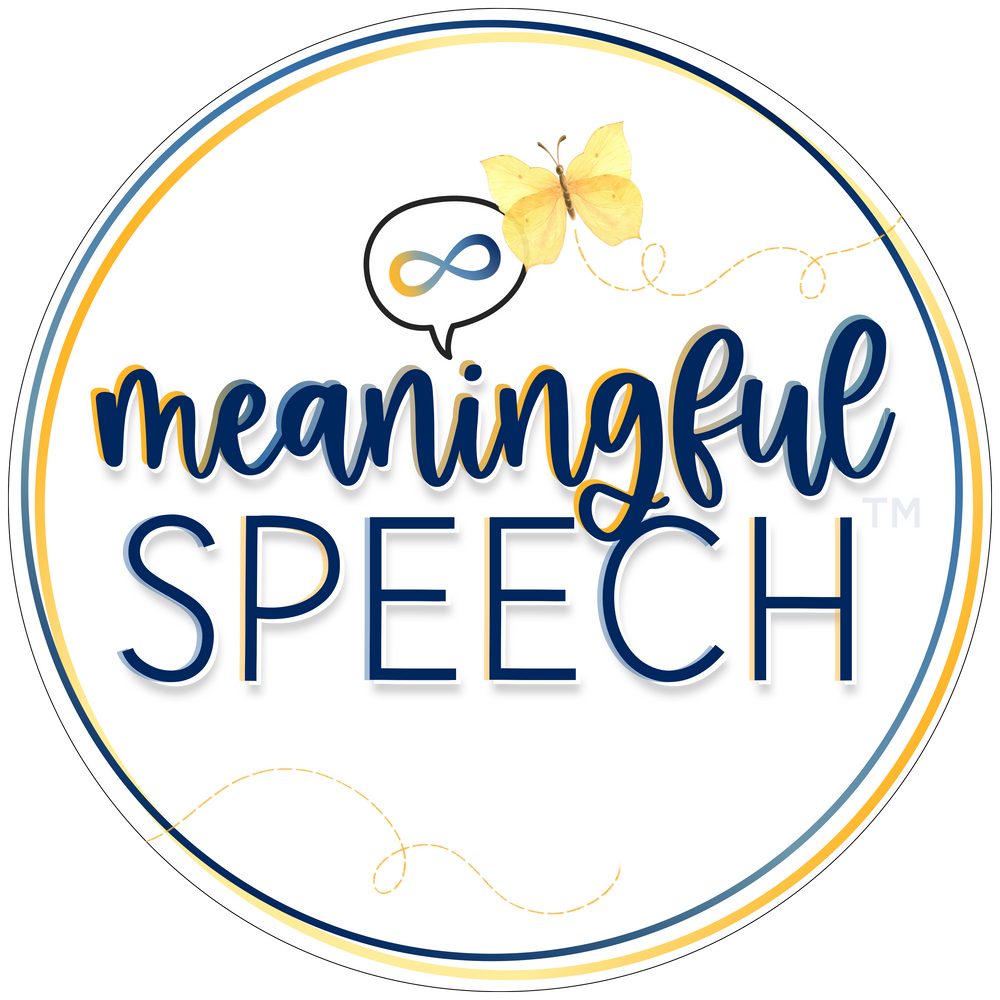What to do when you can't understand a gestalt language processor
Aug 06, 2025
Many parents and caregivers have questions about how to support gestalt language processors (GLPs) when their speech is unclear. Common questions include: When should I focus on speech sounds? Can GLPs have a speech sound disorder? How do strategies for supporting gestalt language processors align with speech sound targeting? In this post, we'll explore these questions in depth.
Why Might a Gestalt Language Processor Be Unintelligible?
There are several factors contributing to why a gestalt language processor may struggle with intelligibility (how well a listener can understand what is being said), and it's essential to consider these before assuming a speech sound disorder is present.
1. Intonation Babies
Gestalt language processors are often described as "intonation babies." They connect with the rhythm and melody of the phrases they hear, using chunks of language that encapsulate specific meanings tied to their experiences. At this stage, they may not yet discern individual words or the sounds that compose them. As they progress through the stages of gestalt language development, their ability to identify these words improves, leading to greater intelligibility.
2. Length of Gestalts
Some gestalt language processors might produce lengthy gestalts that are too complex for their current motor abilities, making their speech sound like jargon. As they mature and advance through the stages of language development, their clarity typically increases.
Example: A two-year-old may attempt to recite a multi-line script from a favorite show, which can be too intricate for them to articulate clearly, resulting in what appears to be “jargon”—though you might recognize its source.
3. Sensory Needs and Regulation
Many gestalt language processors are neurodivergent and may experience sensory processing differences. Supporting their sensory needs can significantly improve their speech and language development. Collaborating with an occupational therapist skilled in sensory processing can help identify and address these needs.
Proactive Strategies:
- Example #1: If a child is sensitive to artificial lighting, avoid bright lights during sessions; instead, utilize natural light by opening windows.
- Example #2: For children who seek tactile experiences, integrate activities like sensory bins or water play into sessions to support their sensory needs.
4. Motor Planning and Dyspraxia
Difficulties with motor planning, such as dyspraxia, can affect speech clarity. Since speech is a fine motor skill, it’s important to recognize that gross motor skills typically develop before fine motor skills. Children with dyspraxia may struggle with:
- Initiating or completing movements
- Expressing emotions through facial cues
- Coordinating play activities
- Performing daily tasks
- Following directions
What Should You Do?
While it’s possible for a child to have a speech sound disorder alongside being a gestalt language processor, we recommend waiting until they reach at least Stage 3 of gestalt language development—where they can process single words as individual meaningful units—before focusing on speech sounds.If the child is highly unintelligible and their speech does not support them to autonomously communicate across situations and environments, we recommend exploring AAC with the child.
Why This Approach?
- Avoiding Stuck Single Words: Speech sound approaches are typically very analytic in style. First you target sounds in isolation, then word level, phrase level, sentence level, and so on. Often having the child repeating these words, phrases, etc. A heavy focus on single words, especially repetitively may encourage a GLP to acquire a repertoire of stuck single words.
- Encouraging Spontaneity: With gestalt language processors, we want to encourage spontaneity and natural language acquisition. We do not want to teach language. With speech sound treatment, words are often chosen strategically based on the target sound(s). Children are expected to use these target words in sessions, sometimes repetitively to practice their target sounds.
- Fostering Connection: Although well-meaning, speech sound approaches have to focus more on "how" a child is producing language rather than creating a supportive environment that acknowledges "what" they are communicating. This may take away from the trust and connection that we are looking to build.
Want to learn more in-depth information about how to support gestalt language processors?
- There are many free podcasts, webinars and articles to get you started. A comprehensive list of resources can also be found on our website. We just released a new FREE masterclass on echolalia and child-led therapy that is perfect for anyone starting their learning journey or on the fence about purchasing our courses!
- Consider taking the Meaningful Speech course to learn more about how your child or client processes language, how you can help support them from echolalia to self-generated (original flexible) language, child-led therapy, and neurodiversity-affirming practices. Looking for something shorter? We have a 1-hour introductory course perfect for extended family, daycare or school staff.
- Consider taking our AAC + Gestalt Language Processing course. It will teach you how to identify, evaluate and support gestalt language processors who use AAC or who you think might benefit from AAC.
- Look for a speech-language pathologist (SLP) who "gets it" and can help you in supporting your child's language development. Check out our registry for SLPs who understand gestalt language processing and child-led therapy.
- Are you a school-based or private practice clinician looking for intake forms for new clients/students or creative visual reminder posters for your space? Check out the Meaningful Speech Marketplace.
- Want to learn more about starting a niche private practice? Watch our 1-hour webinar on starting a niche private practice hosted by Alex Zachos and Jess Teixeira from the Meaningful Speech team HERE.
